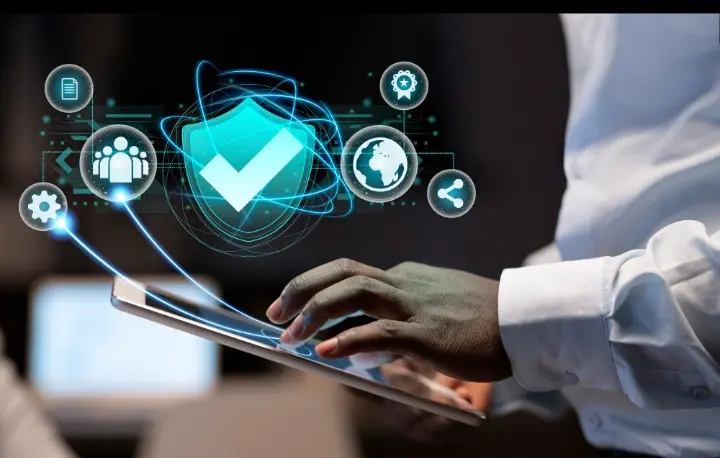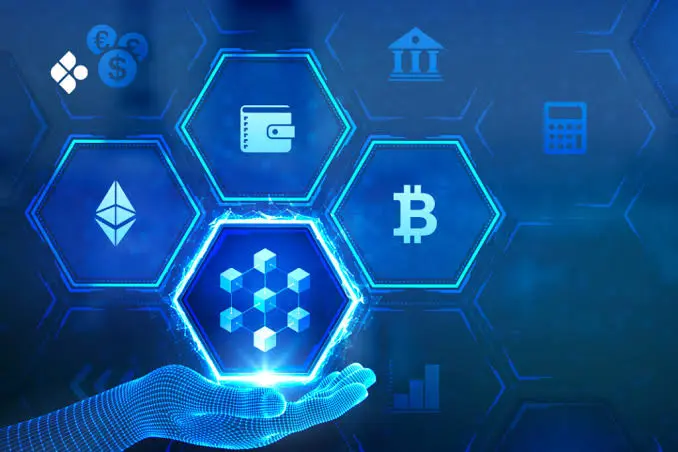In today’s interconnected digital world, trust has become one of the most valuable assets we can have. Whether we’re shopping online, transferring money, or sharing personal data, every digital interaction depends on trust. Yet with the rise of cyberattacks, fraud, data breaches, and misinformation, people have grown increasingly cautious about who handles their data and how it’s used.
This growing need for reliability and transparency is what makes blockchain technology so powerful. It’s not just a buzzword; it’s a groundbreaking innovation that’s reshaping how we build and maintain trust in the digital age.
What Exactly Is Blockchain?
Blockchain is a digital ledger that’s shared across thousands of computers around the world rather than being stored in one central place. Every transaction or record is grouped into a “block,” verified by participants (called nodes), and then linked chronologically to the previous block, creating a continuous, immutable “chain” of data.
What makes blockchain revolutionary is that no single organization controls the system. This decentralization means that data cannot be easily altered or hidden, Every participant in the network can verify the authenticity of transactions themselves. Once data is entered into the blockchain it becomes permanent, time-stamped, and tamper-proof ensuring long-term integrity and accountability.
How Blockchain Builds Trust Online

1. Transparency and Permanence
Every transaction on a blockchain is recorded in a public or permissioned ledger visible to all authorized users. Once a block of data is confirmed it’s locked and added permanently making deletion or alteration impossible without network-wide consensus.
This provides a complete audit trail which is invaluable in industries like finance, healthcare, and logistics, where accuracy and traceability are crucial. For instance, companies like IBM’s Food Trust use blockchain to track food from farms to grocery shelves, ensuring safety and authenticity.
Transparency also builds corporate credibility as customers can verify claims such as organic certification, sustainable sourcing, or fair-trade compliance through public blockchain records.
2. Strong Security through Cryptography
Blockchain’s security lies in its advanced cryptographic foundation. Each transaction is secured using hash functions which generate unique digital fingerprints called hashes that change completely if even a single character of the original data is altered.
Moreover each block contains the hash of the previous block creating a continuous chain of records, This means that tampering with one block would require altering every subsequent block across all copies of the ledger.
This layered encryption and consensus validation make blockchain resistant to hacking, double-spending, or unauthorized data changes. It’s why cryptocurrencies like Bitcoin and Ethereum have operated securely for over a decade, despite being constant targets of attack.
3. Decentralization for Fairness
Traditional systems such as banks, governments, and corporations rely on a central authority to store and verify data. This centralized model creates vulnerabilities; if the central server is compromised, corrupted, or taken offline, the entire system can fail.
Blockchain flips this model, Its peer-to-peer structure distributes data across thousands of nodes worldwide. Each node maintains a copy of the ledger and participates in validating transactions through consensus mechanisms.
This shared control eliminates the risk of censorship, manipulation, or single points of failure. A real-world example is DeFi (Decentralized Finance), where users can lend, borrow, or trade assets directly without banks, ensuring fairness, speed, and transparency.
4. Smart Contracts
Smart contracts are self-executing digital agreements embedded in the blockchain. They automatically trigger predefined actions once specific conditions are met with no intermediaries required.
For example:
In real estate, a smart contract can automatically release payment to the seller once the buyer confirms property transfer.
In insurance, payouts can be triggered automatically if predefined conditions such as a flight delay or cancellation are met.
In supply chains, payments can be processed only after goods are verified as delivered.
Because smart contracts are immutable, transparent, and autonomous, they drastically reduce human error, fraud, and legal disputes. Essentially they replace trust in people with trust in code.
Real-World Applications of Blockchain
Finance
Blockchain has redefined finance through cryptocurrencies, stablecoins, and decentralized finance (DeFi) platforms. It enables cross-border payments in minutes rather than days, with minimal fees and without relying on central banks.
Even major financial institutions like JP Morgan and Visa are integrating blockchain-based payment solutions to increase speed, reduce costs, and prevent fraud.
Healthcare
Patient data stored on blockchains ensures privacy, accuracy, and accessibility. Medical histories can be securely shared across hospitals and clinics without duplication or tampering.
Projects like MediLedger and BurstIQ are already improving drug traceability and data exchange while giving patients control over their personal information.
Supply Chain
In industries like food, fashion, and pharmaceuticals, blockchain ensures product authenticity and ethical sourcing.
Consumers can scan a QR code to trace a product’s journey from origin to store shelf verifying its legitimacy. This builds consumer trust and helps companies combat counterfeit goods and unethical practices.
Government and Voting
Blockchain can make public services more transparent and accountable. For example, Estonia uses blockchain to secure citizens’ health records, tax data, and even voting systems.
In elections, blockchain-based voting platforms could eliminate fraud, enhance accessibility, and ensure that every vote is counted exactly once strengthening democratic trust.
Digital Identity
Instead of relying on centralized identity databases that can be hacked or misused, blockchain supports Self-Sovereign Identity (SSI), where individuals control their own digital credentials.
Users can verify their identity for online services without exposing unnecessary personal details, reducing identity theft and data misuse.
Challenges Ahead
Despite its potential, blockchain faces notable challenges:
1. Implementation and Cost
High Initial Costs: Developing and deploying blockchain systems require significant investment in infrastructure, software development, and skilled professionals.
Integration Difficulties: Most existing business systems are not designed for blockchain, making integration complex and expensive.
Skill Gap: There’s a shortage of trained blockchain experts, leading to slower adoption and higher hiring costs.
2. Security and Privacy
Private Key Management: Users must securely store their private keys; losing them means losing access to their assets permanently.
Vulnerability to Attacks: Some blockchains, especially smaller ones, are at risk of attacks like the 51% attack, where control over the network can be manipulated.
Limited Privacy: Public blockchains are transparent; transaction data can be traced and analyzed, exposing user identities.
Smart Contract Risks: Coding errors or vulnerabilities in smart contracts can be exploited by hackers, leading to financial losses.
3. Governance and Regulation
Lack of Clear Regulation: Many countries lack well-defined laws for blockchain and digital assets, creating legal uncertainty.
Decentralized Governance Challenges: Decision-making in decentralized systems can be slow, prone to conflict, or even cause network splits (hard forks).
Compliance Issues: Blockchain’s immutability conflicts with data protection laws (like the GDPR) that require personal data to be erasable.
4. Scalability and Interoperability
Limited Transaction Speed: Many blockchains process transactions slowly compared to traditional systems like Visa or Mastercard.
Energy Consumption: Proof-of-Work (PoW) blockchains like Bitcoin consume enormous amounts of energy, raising sustainability concerns.
Scalability: Processing transactions across thousands of nodes can slow performance but technologies like Layer-2 scaling (e.g. Lightning Network, Polygon) are solving this.
Lack of Interoperability: Many blockchain networks operate independently and cannot communicate or exchange data with one another. This creates isolated “silos” of information, which limits collaboration, reduces efficiency, and restricts the full potential of blockchain applications across different platforms and industries.
The Future of Trust

Blockchain represents more than a technological advancement—it marks a shift in the social architecture of trust. In a world plagued by data manipulation and digital deception, blockchain creates verifiable truth.
As organizations, governments, and individuals continue to embrace this technology, we move toward a transparent, accountable, and equitable digital society where trust is not assumed, but mathematically proven.
Conclusion
Blockchain is not merely transforming how we exchange money or store data; it is redefining the very foundation of digital relationships. By merging transparency, security, and decentralization, it offers a system where trust is not assumed, but mathematically verified. In this trustless environment, integrity becomes inherent, data becomes tamper-proof and transactions become verifiable across borders and industries.
Beyond finance blockchain’s influence extends into healthcare, supply chains, governance, education, and digital identity; creating ecosystems where every action can be traced, validated, and protected from manipulation. It empowers individuals, strengthens institutions, and lays the groundwork for a more open, equitable, and accountable digital world.
In this new era of digital trust, blockchain stands as a pillar of integrity, accountability, and confidence. It’s a revolutionary technology ensuring that what we see, share, and believe online can truly be trusted. It represents not just a shift in technology, but a paradigm shift in how humanity builds and maintains trust in the digital age.